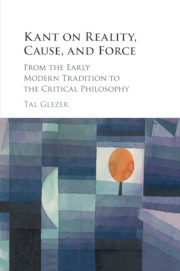Bibliography
Published online by Cambridge University Press: 21 December 2017
- Type
- Chapter
- Information
- Kant on Reality, Cause, and ForceFrom the Early Modern Tradition to the Critical Philosophy, pp. 215 - 222Publisher: Cambridge University PressPrint publication year: 2018



